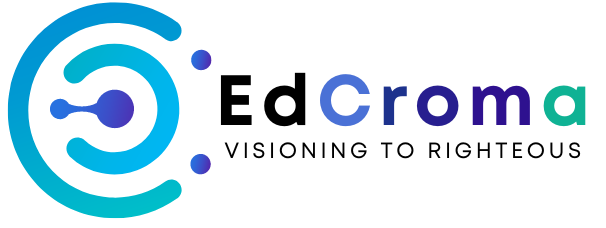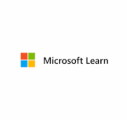- All
- Favorite
- Popular
- Most rated

Introduction to audio classification with TensorFlow
In this learn module we will be learning how to do audio classification with TensorFlow. There are multiple ways to build an audio classification model. You can use the waveform, tag sections of a wave file, or even use computer vision on the spectrogram image. In this tutorial we will first break down how to understand audio data, from analog to digital representations, then we will build the model using computer vision on the spectrogram images. That's right, you can turn audio into an image representation and then do computer vision to classify the word spoken!

Use MLflow with Azure Machine Learning jobs submitted with CLI (v2)
Use MLflow to track model metrics and artifacts when training and registering models with the Azure Machine Learning CLI (v2).

Plan a Moon mission by using Python pandas
Like Fei Fei, use data to plan your own mission to the Moon. Ensure that your rocket can not only get you there, but also bring you and all your Moon rocks safely back to Earth.

Use basketball stats to optimize game play with Visual Studio Code, inspired by SPACE JAM: A NEW LEGACY
Inspired by the new film Space Jam: A New Legacy, this learning path shows basketball fans how an understanding of data science and coding can support their passions, create opportunities, and even open doors to possible careers. Develop skills in Visual Studio Code, Azure, GitHub, JavaScript, and Python, to gain insights into how individual moments throughout a player's history can lead to a critical game decision in the finals.

Train compute-intensive models with Azure Machine Learning
Large-scale machine-learning and deep-learning models require ample compute power. Learn when to choose GPU compute, and how different frameworks help you to make optimal use of GPU compute during preprocessing, model training, and deployment.

Deploy an Azure Machine Learning model to a managed endpoint with CLI (v2)
Use the Azure Machine Learning CLI (v2) to deploy a machine learning model to a managed online endpoint.

Predict meteor showers by using Python and Visual Studio Code
Learn how to use concepts from machine learning to predict the occurrence of meteor showers (or Moon Goddess tears).

Explore space with Python and Visual Studio Code; inspired by Netflix’s Over the Moon
Learning to code sometimes feels out of reach. But if we've learned anything from the people who have burst through our atmosphere, orbited our Earth, or walked on the Moon, it's that goals that seem out of reach require determination and passion. In this learning path, we'll draw on these themes from the story line of Over the Moon.

Train models in Azure Machine Learning with the CLI (v2)
The Azure Machine Learning CLI (v2) is an Azure CLI extension that you can use to train and deploy machine learning models. Learn how to use the CLI (v2) to create Azure Machine Learning workspace assets to use for model training and deployment.

Preprocess large datasets with Azure Machine Learning
Choose GPU compute in Azure Machine Learning when training compute-intensive models. To reduce the time needed to process the data, store your data efficiently and use a data manipulation library compatible with GPU compute.

Introduction to natural language processing with TensorFlow
In this module, we'll explore different neural network architectures for processing natural language texts. Natural Language Processing (NLP) has experienced fast growth and advancement primarily because the performance of the language models depends on their overall ability to "understand" text and can be trained using an unsupervised technique on large text corpora. Additionally, pre-trained text models (such as BERT) simplified many NLP tasks and has dramatically improved the performance. We'll learn more about these techniques and the basics of NLP in this learning module.

Work with generative artificial intelligence (AI) models in Azure Machine Learning
Explore the use of generative artificial intelligence (AI) models for natural language processing (NLP) in Azure Machine Learning.

Introduction to TensorFlow using Keras
This module provides all the concepts and practical knowledge you need to get started with TensorFlow. We explore Keras, a high-level API released as part of TensorFlow, and use it to build a simple neural network for image classification.

Train compute-intensive models with Azure Machine Learning
Train compute-intensive models with GPU compute in Azure Machine Learning. By monitoring workloads, you can find the optimal compute configuration. Distributed training allows you to train on multiple nodes to speed up training time.

Deploy deep learning workloads to production with Azure Machine Learning
Deploying large-scale models for real-time inferencing is challenging because of the model's size. Learn what you can do and which frameworks you can use to optimize your model's performance during model scoring.

TensorFlow fundamentals
Learn the fundamentals of deep learning with TensorFlow! This beginner friendly learning path will introduce key concepts to building machine learning models.

Deploy a model with GitHub Actions
Learn how to automate and test model deployment with GitHub Actions and the Azure Machine Learning CLI (v2).

Introduction to audio classification with PyTorch
In this Learn module, you learn how to do audio classification with PyTorch. You'll understand more about audio data features and how to transform the sound signals into a visual representation called spectrograms. Then you'll build the model by using computer vision on the spectrogram images. That's right, you can turn audio into an image format, and then do computer vision to classify the word spoken!

Create a web app that uses data to make decisions on the basketball court
Use JavaScript, Azure, GitHub, and Visual Studio Code to write a web app that helps the Tune Squad coach make data-based decisions on the basketball court, inspired by SPACE JAM: A NEW LEGACY.

Automate machine learning workflows
Automate machine learning workflows with Azure Machine Learning pipelines, Azure Pipelines, and GitHub Actions.

Introduction to machine learning operations (MLOps)
Machine learning operations (MLOps) applies DevOps principles to machine learning projects. Learn about which DevOps principles help in scaling a machine learning project from experimentation to production.

Go beyond Keras: Customize with TensorFlow
If you've completed the first module and realized that you need extra flexibility to build or debug your model, then this module is for you. We'll show how you can create a simple neural network for image classification, but this time we'll use lower-level TensorFlow code and explain the foundational concepts needed to understand it.

Introduction to Natural Language Processing with PyTorch
This module explores different neural network architectures for dealing with natural language texts. Natural Language Processing (NLP) is growing in importance due to the ability of language models to accurately "understand" human language faster while using unsupervised training on large text corpora. This module covers different NLP techniques such as using bag-of-words (BoW), word embeddings and recurrent neural networks for classifying text from news headlines to one of the 4 categories (World, Sports, Business, and Sci-Tech).

Source control for machine learning projects
Learn how to work with source control for your machine learning projects. Source control is an essential part of machine learning operations (MLOps).
In-Depth Exploration of Microsoft Learn
Microsoft Learn is an innovative online educational platform developed by Microsoft, designed to offer a wide range of free, interactive learning opportunities. It caters to individuals looking to enhance their knowledge and skills across various technological fields such as cloud computing, artificial intelligence, data science, and software development. Since its launch, Microsoft Learn has become a crucial resource for professionals aiming to stay ahead in the technology sector.Origins and Evolution of Microsoft Learn
Launched with the mission to make high-quality education accessible to everyone, Microsoft Learn initially focused on Microsoft’s core technologies, including Azure and Microsoft 365. Over time, the platform has broadened its scope to cover a wide array of topics, reflecting the ever-evolving tech landscape and diverse learner needs. This evolution has established Microsoft Learn as a central hub for tech education.Impact on Online Education
Microsoft Learn has transformed online education by integrating interactive and hands-on learning experiences. The platform’s key contributions include:- Hands-On Learning: Provides practical scenarios to apply knowledge.
- Interactive Elements: Includes labs, quizzes, and exercises that engage users actively.
- Personalized Learning Paths: Tailors educational experiences to individual goals and interests.
Key Features and Advantages
Microsoft Learn offers several notable features:- Free Access to Learning Resources: Enjoy comprehensive educational content without any cost, making high-quality learning accessible to all.
- Interactive Learning Experience: Engage with hands-on labs, quizzes, and real-world scenarios to apply and retain knowledge effectively.
- Extensive Course Catalog: Explore a wide range of courses in cloud computing, artificial intelligence, data science, and more.
- Personalized Learning Paths: Follow guided paths tailored to your career goals and interests for a customized learning journey.
- Certification Preparation: Access resources and practice tests to help prepare for Microsoft certification exams and enhance your professional credentials.
- Practical Application: Build confidence and proficiency through practical exercises that simulate real-world challenges.
- Integration with Microsoft Ecosystem: Utilize the latest tools and technologies within Microsoft’s ecosystem to stay updated with industry trends.
- Continuous Learning Support: Benefit from regularly updated content that reflects the latest advancements in technology.

